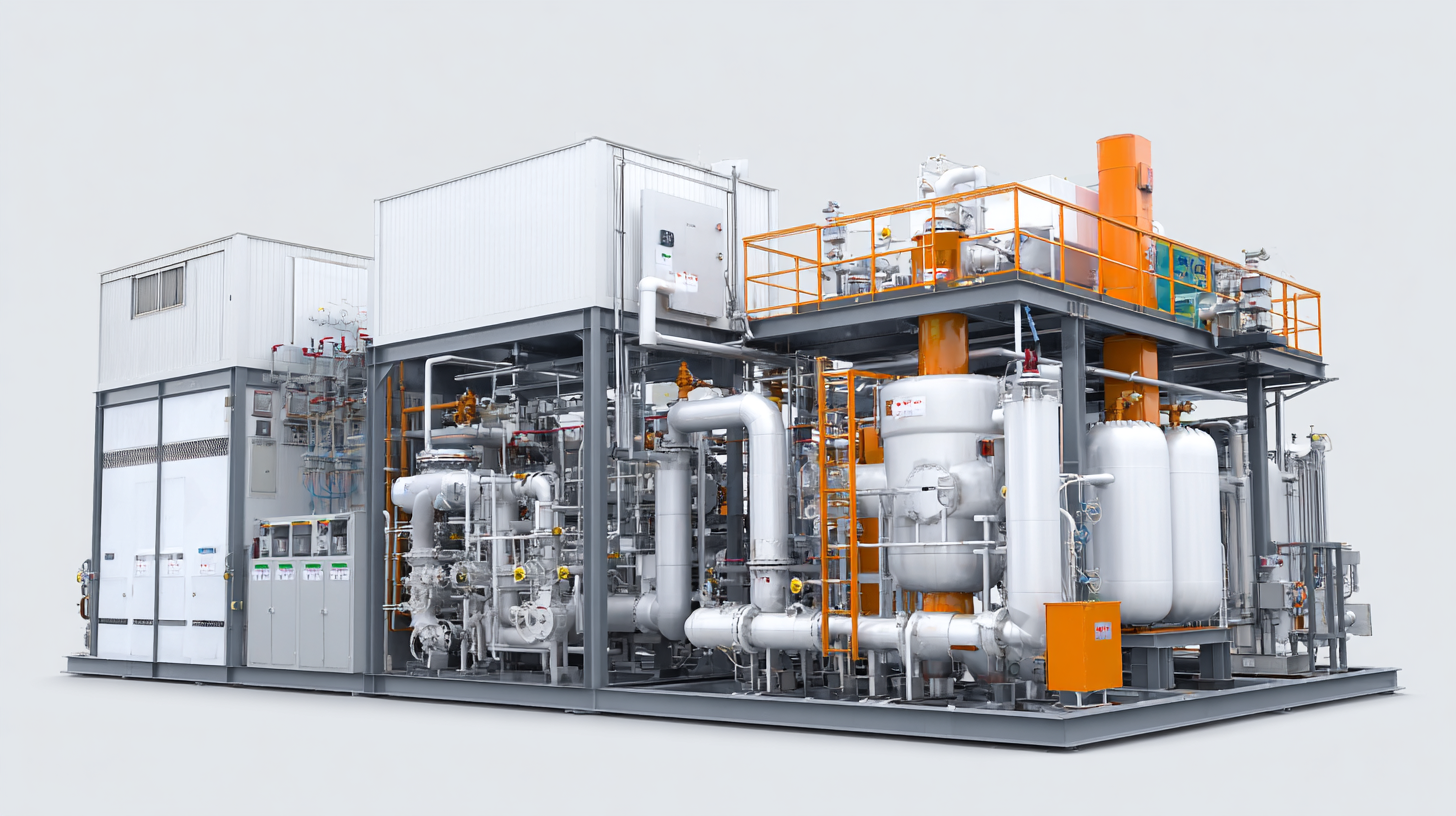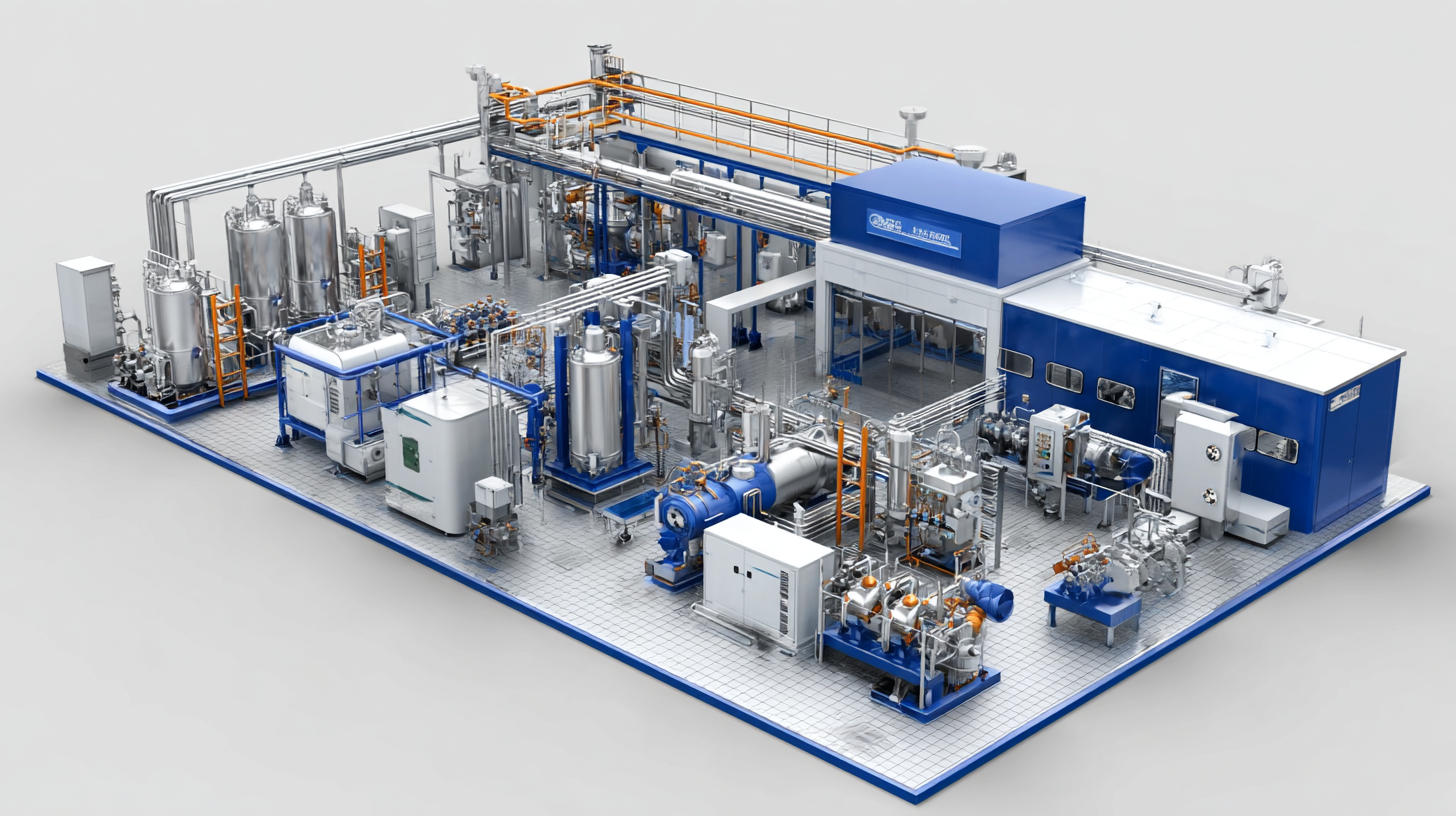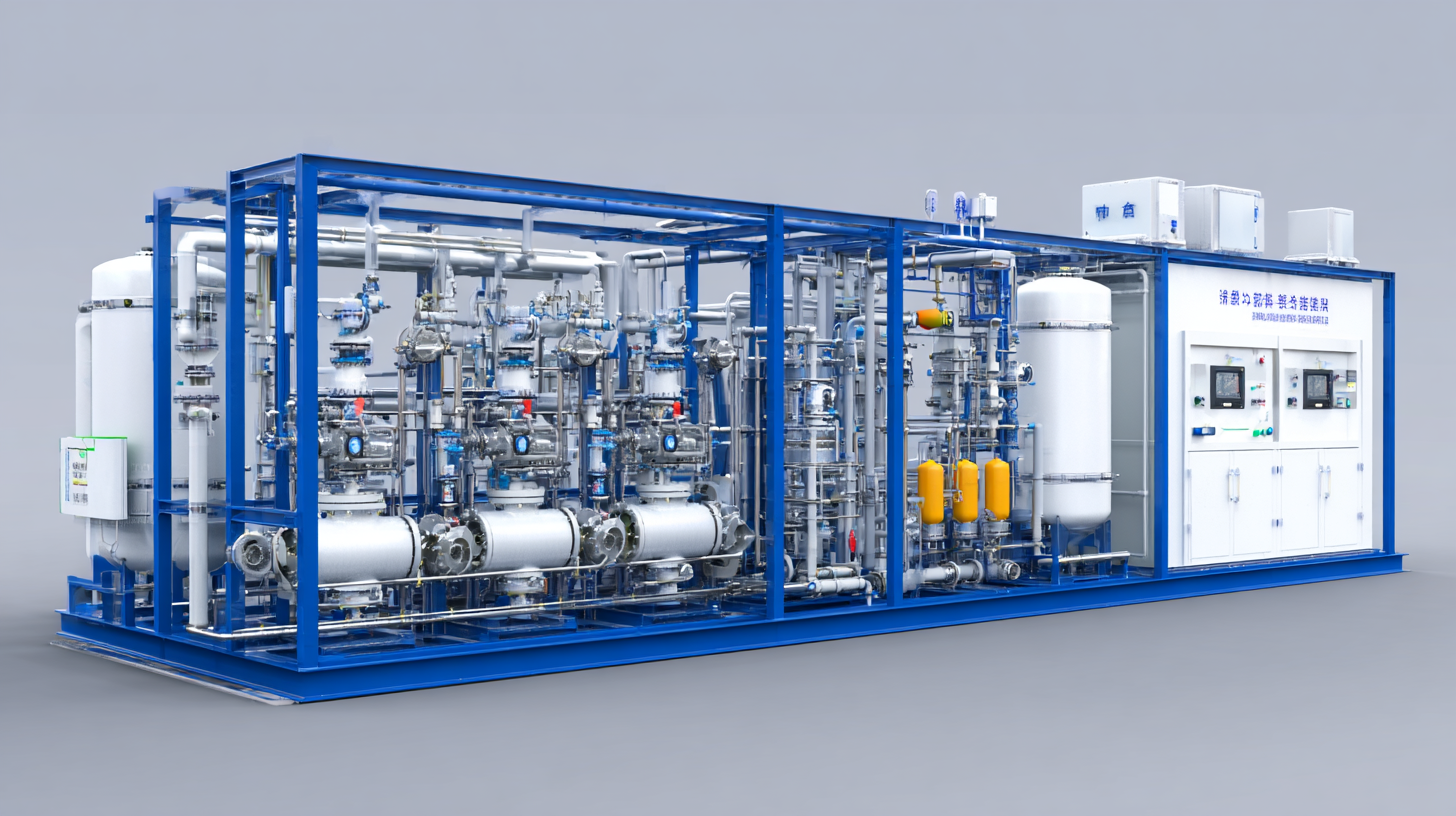
-
Home
-
About us
-
Products
-
Solutions
-
News
-
Blog
-
Contact us
Leave Your Message

The demand for high-purity oxygen in various industrial applications has led to the innovative development of Cryogenic Oxygen Plants, which utilize advanced separation techniques to produce oxygen efficiently and cost-effectively. According to a recent report by Market Research Future, the global market for cryogenic equipment is projected to reach approximately $35 billion by 2026, driven primarily by the increasing need for oxygen in healthcare, metal fabrication, and aerospace industries. The Cryogenic Oxygen Plant plays a critical role in providing oxygen for steelmaking processes, where oxygen enriches combustion, ultimately enhancing productivity and reducing emissions. As industries continue to seek sustainable solutions and improve operational efficiency, the innovative applications of Cryogenic Oxygen Plants will undoubtedly become integral to modern industrial processes, ensuring that sectors from medicine to manufacturing can harness the benefits of this vital resource.

Cryogenic oxygen plants have become pivotal in transforming various industries through their innovative features. These plants leverage advanced technologies to produce high-purity oxygen efficiently, significantly enhancing production capabilities in sectors such as healthcare, aerospace, and metallurgy. According to a recent report by the International Cryogenics Association, the market for cryogenic oxygen plants is projected to reach $8 billion by 2025, reflecting a growing demand for reliable oxygen supplies in industrial applications.
One standout feature of modern cryogenic oxygen plants is their ability to operate sustainably. With an emphasis on energy efficiency, many of these plants utilize cost-effective energy recovery systems that can reduce operational costs by up to 30%. This efficiency not only minimizes waste but also lowers the carbon footprint, aligning with global sustainability goals. Industries are continuously adopting these technologies to remain competitive, given that approximately 70% of oxygen in industrial applications is now generated via cryogenic methods.
Tips for choosing the right cryogenic oxygen plant include assessing the plant's production capacity, energy consumption, and maintenance requirements. It's crucial to ensure that the selected technology aligns with specific operational needs and sustainability objectives. Additionally, partnering with experienced suppliers who provide comprehensive post-installation support can enhance efficiency and performance, leading to long-term operational success.

Cryogenic oxygen plays a pivotal role in modern healthcare, significantly enhancing medical treatments and processes. According to a report by the Global Oxygen Market Analysis, the demand for oxygen in healthcare settings is projected to grow at a CAGR of 10.2% from 2022 to 2027. This growth is driven by the rising prevalence of respiratory diseases and the increasing number of surgical procedures that require high-quality oxygen supply. Cryogenic oxygen plants provide an efficient means of producing large quantities of medical-grade oxygen, which is essential for critical care, anesthesia, and emergency services.
Moreover, the versatility of cryogenic oxygen extends to various medical applications, including cryosurgery, a technique used to target and destroy abnormal tissues with extreme cold. The Journal of Medical Chemistry highlights that this method shows considerable promise in treating tumors and warts, providing an alternative to traditional surgical methods. Furthermore, enhancements in oxygen therapy, a cornerstone of respiratory care, are supported by cryogenic technology, which ensures a constant and reliable supply of oxygen, particularly in hospitals and long-term care facilities. As industries continue to innovate, the role of cryogenic oxygen in healthcare remains crucial for improving patient outcomes and streamlining medical procedures.
| Application Area | Oxygen Purity Level (%) | Impact on Healthcare | Key Benefits |
|---|---|---|---|
| Respiratory Treatments | 93 - 96 | Improved patient recovery rates | Enhanced oxygen therapy effectiveness |
| Surgical Procedures | 98 - 99 | Reduced anesthesia complications | Faster patient recovery time |
| Cryogenic Preservation | 95 - 99.5 | Long-term storage of biological samples | Maintains cell viability |
| Hyperbaric Medicine | 100 | Effective treatment for decompression sickness | Accelerated healing of tissues |
| Emergency Medicine | 92 - 94 | Crucial in life-threatening situations | Immediate access to medical oxygen |
The use of cryogenic technologies in industrial applications is revolutionary, especially when it comes to reducing environmental footprints. Cryogenic oxygen plants not only optimize processes but also contribute significantly to sustainability. By utilizing liquefied oxygen, industries can improve combustion efficiency, leading to lower emissions of pollutants and greenhouse gases. This is particularly crucial in sectors like steel production and gasification, where enhancing the oxygen supply directly results in cleaner outputs.
Moreover, the innovative design of cryogenic plants allows for better energy efficiency. Many modern systems are equipped with advanced recovery methods that capture and recycle heat, minimizing energy wastage. The efficient separation of oxygen from ambient air using cryogenic processes significantly reduces the energy required compared to traditional methods.
As industries are increasingly held accountable for their environmental impact, the integration of cryogenic technologies presents a viable solution for companies aiming to meet both productivity goals and sustainability targets. By embracing these practices, businesses not only comply with regulations but also contribute to a cleaner, healthier planet.
 The implementation of cryogenic oxygen plants has transformed various industries, offering innovative solutions that enhance efficiency and sustainability. In the healthcare sector, for instance, a leading hospital in Germany adopted a cryogenic oxygen plant to meet its growing demand for medical-grade oxygen. By leveraging cryogenic technology, the facility was able to produce high-purity oxygen on-site, significantly reducing expenditures related to procurement and logistics. This shift not only streamlined operations but also ensured a consistent supply of essential oxygen for patient care.
The implementation of cryogenic oxygen plants has transformed various industries, offering innovative solutions that enhance efficiency and sustainability. In the healthcare sector, for instance, a leading hospital in Germany adopted a cryogenic oxygen plant to meet its growing demand for medical-grade oxygen. By leveraging cryogenic technology, the facility was able to produce high-purity oxygen on-site, significantly reducing expenditures related to procurement and logistics. This shift not only streamlined operations but also ensured a consistent supply of essential oxygen for patient care.
Another compelling case study is found in the steel manufacturing industry, where a major player in India integrated a cryogenic oxygen plant to optimize its blast furnace operations. The introduction of high-purity oxygen improved combustion efficiency, resulting in reduced coke consumption and lower emissions. This application demonstrates the versatility of cryogenic technology, as it not only enhances production capabilities but also aligns with increasingly stringent environmental regulations. As industries continue to explore innovative methods to boost productivity and sustainability, cryogenic oxygen plants are proving to be a valuable asset in achieving these goals.
The rapid advancements in cryogenic technology are profoundly influencing global markets, particularly in sectors such as healthcare, energy, and aerospace. The cryogenic valves and storage systems, pivotal in managing liquefied gases like oxygen and nitrogen, are witnessing significant growth. By 2029, the cryogenic valve assembly market is expected to reach an impressive USD 7.21 billion, reflecting a CAGR of 8.3%. As industries increasingly adopt these technologies, the efficiency and safety of cryogenic processes are being enhanced, ultimately leading to better product quality and reduced operational costs.
Tips for businesses looking to invest in cryogenic technology include prioritizing advanced materials for valve assemblies, which can withstand extreme conditions and improve reliability. Additionally, staying informed about regulatory changes and technological advancements can provide a competitive edge in this rapidly evolving sector. Companies should also consider collaborative partnerships to foster innovation and expedite the development of new applications for cryogenic systems.
With the rise of hydrogen energy systems, researchers and industries are now exploring how cryogenic technology can be integrated into these emerging markets. The cryostat market, projected to grow at a CAGR of 4.9% and reach USD 2.8 billion by 2027, illustrates the potential for synergies between cryogenic processes and sustainable energy solutions.